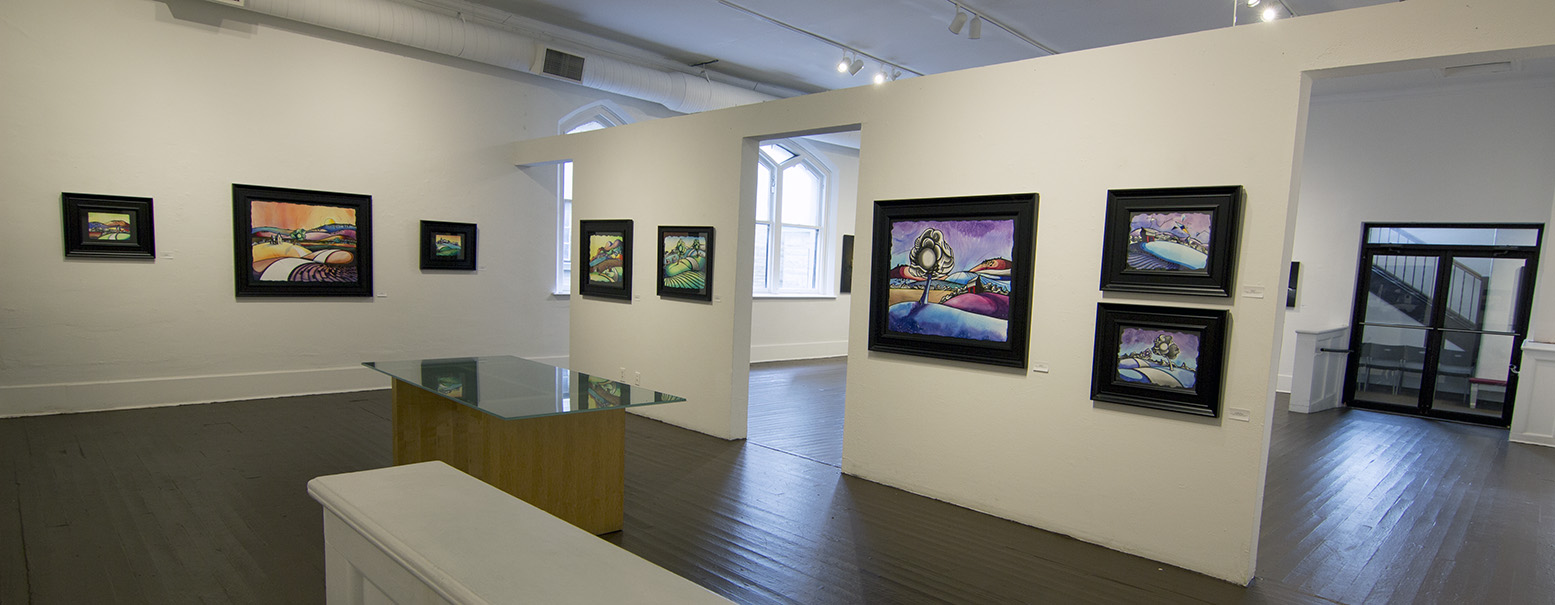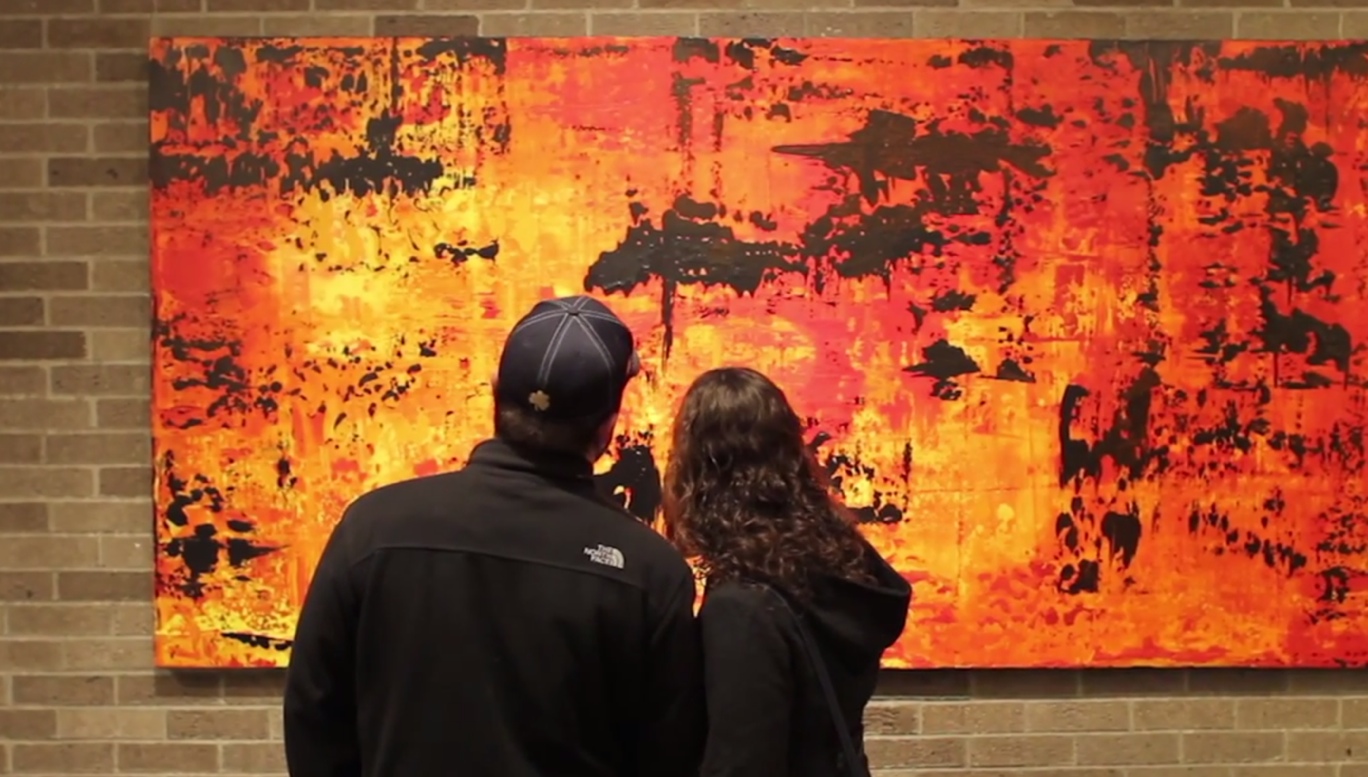Visiting an Art Gallery
“What the art gallery offers, what makes it truly unique is something that is neither leisure nor education. It offers an aesthetic experience. Whether it was made in Athens in the 5th century B.C, sixteenth century Florence, or early twentieth century Paris, at the moment that you stand before the work of art, it exist for you.”
- Daniel A. Siedell
For many of us, the idea and process of interacting with artwork in a gallery is a bit daunting. What does it mean to interact with art? Where does one even begin? To provide us with some advice, art historian, curator, and University of Nebraska Assistant Professor of Art History, Dr. Daniel A. Siedell offers some practical steps that will serve us well the next time we visit an art gallery.
Step I The Gallery:
According to Siedell, the gallery is not merely a building that contains works of art. It is itself a work of art. When visiting an art gallery, the viewer should take time experiencing the building itself. The viewer should walk around its grounds (especially if it has outdoor sculptures on display) and look at how the building interacts with the landscape, and its surroundings. What can the building itself tell you about the art it holds, and what does it say about the kind of experience it holds for you? Siedell calls the viewer to take some time to learn the history of the gallery you are visiting.
Step II Inside the Gallery:
“In gallery spaces,” Siedell explains, “a curator placed the works of art in a particular room to create an experience for the viewer. When you enter a gallery, spend some time observing the room as a whole. Does the installation consist of paintings, sculptures, photographs, drawings, video, or a combination?” We should ponder what the installation intends for us to experience in its space. At the same time, Siedell points out that the viewer should also observe the relationships between the works, those next to one another, the works on a single wall, and the works facing each other as well. In so doing, it is important to pay attention to how you are experiencing the room as a whole.
Step III Viewing a Piece of Art:
Once you have taken in the room , it is time now to shift your focus to single pieces of art. “After spending some time with the room as a whole, and experiencing the general feeling that the room produces, begin to look more closely at the specific works,” Siedell says. Once you have zeroed in on a piece, it is important not to become impatient in your pursuit of meaning. “Like music, poetry, film, and theatre, a work of art is a time-based event,” Siedell explains, “Because we see the work in its totality immediately, we assume that the painting or sculpture reveals its meaning immediately. It does not.” We must remember that viewing a piece of art is an aesthetic experience that unfolds over time. It is not instantaneous.
Siedell also explains that the problem with wall labels is that people read them. “Wall labels, didactic texts, and other education materials feed our desire for information, and for education. Yet this can fight against the work's desire to be experienced, felt, and heard,” he explains, “The danger of explanatory wall labels is that the works of art become merely visual illustrations of the idea presented in the text. When we look at labels, we become deaf to what the work is saying to us as we take it in, and what it says cannot be distilled into a wall label.”
If you are viewing a painting, Siedell explains that every painting does two things simultaneously, and it is the tension between these two things that makes a painting a work of art and not just an image. 1) “A painting opens up imaginative space inside the canvas, a space within which figures or shapes interact.” 2) “A painting also remains a flat surface with paint smeared across it. A painting is what is painted, and how it is painted. All painters exploit this tension.”
According to Siedell, if you are viewing a sculpture, no matter what a sculpture depicts, it is first and foremost an object that occupies space in the world. “Unlike a painting,” he explains, “a sculpture engages us bodily. Artists often explore this inherent physicality in sculpture.”
Finally, when viewing photography we must realize that, “more so than painting and sculpture, photography is the visual medium that shapes our cultural imagination,” Siedell says, “It forms how we view ourselves as well as our neighbor. It is a medium that we all use to document the world.”
With these basic steps in mind, we must remember that there is no cookie cutter way to properly have an aesthetic experience. Your visit to an art gallery is yours alone, and this advice from Siedell is meant to be a starting point for you. However, his final advice reigns true: “Don’t be surprised if your experience at the museum begins after you’ve left.”



